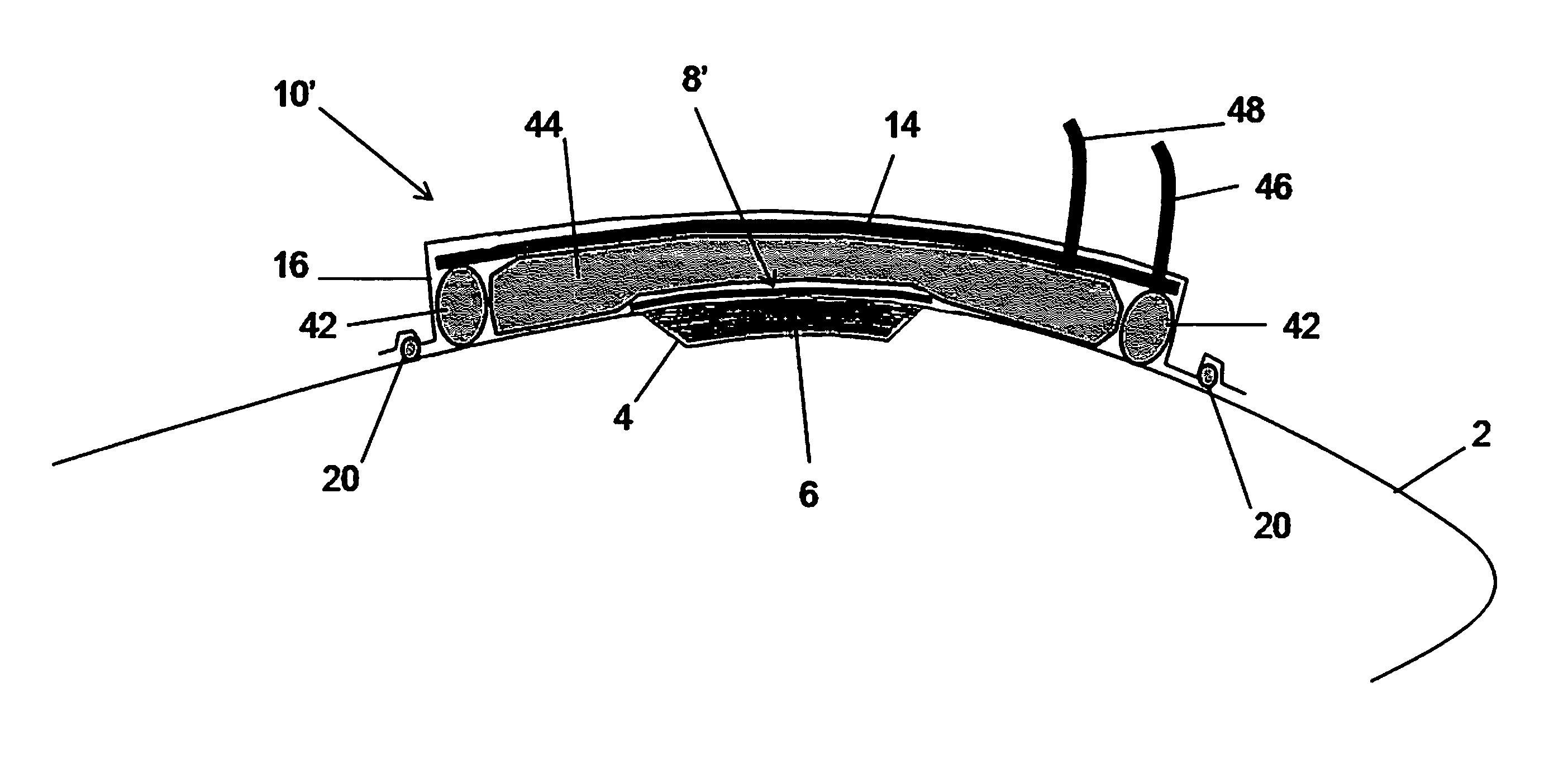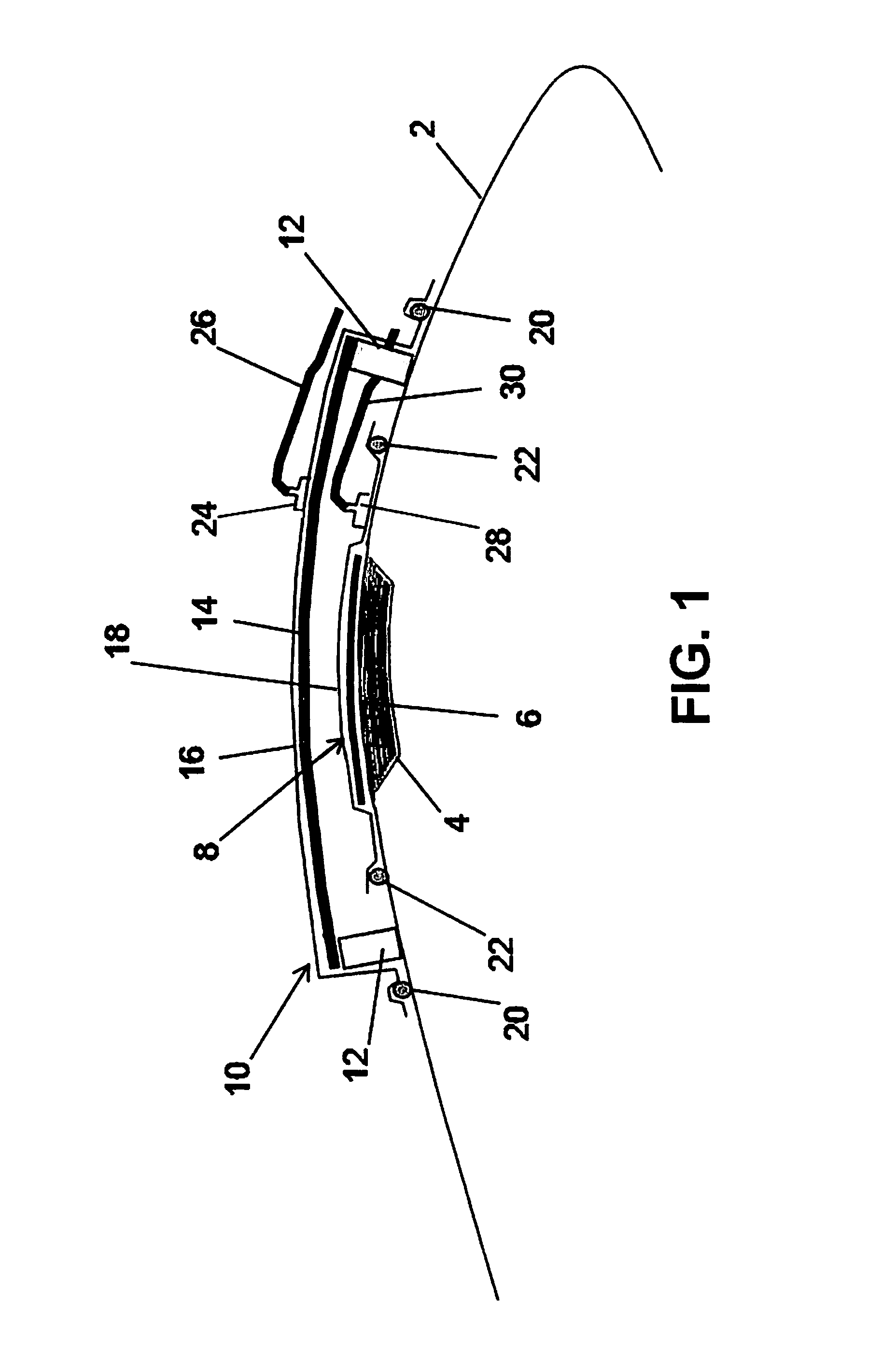Systems and methods for on-aircraft composite repair using double vacuum debulking
a composite repair and vacuum deburking technology, applied in the field of systems and methods for repairing structures comprised of composite materials, can solve the problems of increasing the support cost of the aircraft, commercial airlines today do not have the ability to repair structural damage to aircraft's composite structures, and the average composite repair permitted in the structural repair manual takes approximately 15 hours to complete, so as to reduce the handling of patch/adhesive, reduce the cost of material and tooling, and reduce the effect of manpower and material costs
- Summary
- Abstract
- Description
- Claims
- Application Information
AI Technical Summary
Benefits of technology
Problems solved by technology
Method used
Image
Examples
Embodiment Construction
[0027]The invention is an in-situ double vacuum debulk composite repair system designed to produce partially cured or fully cured autoclave-quality hot-bond composite repairs on contoured structures. The invention provides vacuum pressure for hot bond repairs to be performed on flat and contoured structures using one set-up capable of debulking (partially curing) and then fully curing repairs on composite and metallic aircraft structures.
[0028]The invention may be implemented using any one of a multiplicity of different structures installed on the repair site. For example, in accordance with one embodiment, the DVD composite repair system comprises solid perimeter standoff extrusions and strongback support tooling which provide a conformable DVD chamber for the first phase of the DVD process on-aircraft. The secondary stage of cure is performed inside a conventional vacuum bag placed immediately over the patch. Such a system is depicted in FIG. 1.
[0029]FIG. 1 shows a parent structur...
PUM
| Property | Measurement | Unit |
|---|---|---|
| temperatures | aaaaa | aaaaa |
| cure temperatures | aaaaa | aaaaa |
| size | aaaaa | aaaaa |
Abstract
Description
Claims
Application Information
 Login to View More
Login to View More - R&D
- Intellectual Property
- Life Sciences
- Materials
- Tech Scout
- Unparalleled Data Quality
- Higher Quality Content
- 60% Fewer Hallucinations
Browse by: Latest US Patents, China's latest patents, Technical Efficacy Thesaurus, Application Domain, Technology Topic, Popular Technical Reports.
© 2025 PatSnap. All rights reserved.Legal|Privacy policy|Modern Slavery Act Transparency Statement|Sitemap|About US| Contact US: help@patsnap.com



